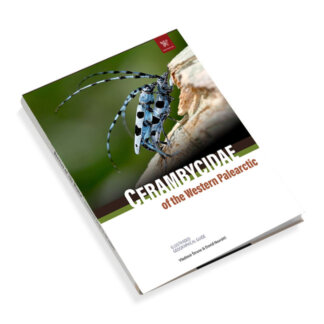The Importance of Bumblebees
Bumblebee insect
Bumblebees, part of the genus Bombus, are vital pollinators primarily found in temperate regions. These insects are easily recognized by their sturdy bodies, fuzzy coats, and distinctive black and yellow stripes. They play a significant role in the ecosystem by effectively pollinating a wide range of flowering plants, including many crops essential for human consumption.
Book novelties:
Prioninae of the World I.
Cerambycidae of the Western Paleartic I.
Bumblebee insect
We recommend:
jeweled beetles, ground beetles, longhorn beetles, goliath beetle, stag beetle, carpet beetles
Books about Beetles
Unique pictorial atlases for identifying Beetles:
(2020) Tiger Beetles of the World, Cicindelidae, Illustrated guide to the genera
(2023) Tiger Beetles of Africa, Cicindelidae, Geographical guide to the family Cicindelidae
(2024) Tiger Beetles of Orient, Cicindelidae, Geographical guide to the family Cicindelidae
(2022) Ground Beetles of Africa, Afrotropical Region
(2022) Jewel Beetles of the World, Buprestidae, Illustrated guide to the Superfamily Buprestoidea
(2008) The Prionids of the World, Prioninae, Illustrated catalogue of the Beetles
(2010) The Prionids of the Neotropical region, Prioninae, Illustrated catalogue of the Beetles
Diversity and Social Structure
Globally, there are around 250 species of bumblebees, with a prominent presence in North America and Europe. These insects have a fascinating social structure, living in colonies that can consist of 50 to several hundred members. Unlike honeybees, bumblebee colonies are annual; new queens emerge in the spring to establish fresh nests after mating occurs in the fall.
Buzz Pollination
One of the most intriguing abilities of bumblebees is their technique known as “buzz pollination.” This process involves the bee vibrating its body to release pollen from the anthers of specific flowers, such as tomatoes and blueberries. Research indicates that this method can enhance fruit yield by as much as 30% in crops that depend on this type of pollination.
Bumblebee insect
Preferred Habitats
Bumblebees thrive in environments rich in flowering plants, such as meadows, gardens, and agricultural fields. Their foraging behavior is influenced by various environmental factors, including temperature and food availability. Notably, bumblebees can forage in cooler temperatures than many other pollinators, which allows them to extend the pollination season across different ecosystems.
Threats and Conservation
Unfortunately, bumblebee populations are facing significant declines due to factors such as habitat destruction, pesticide use, and climate change. Research has shown that some species have experienced population reductions exceeding 50% in recent decades. To protect these crucial insects, conservation efforts are essential. This includes creating habitats that support pollinators, minimizing pesticide usage, and promoting biodiversity within agricultural practices.
Conclusion, Bumblebee insect
In summary, bumblebees are not only captivating creatures but also essential players in our ecosystems and food systems. Gaining a deeper understanding of their biology, behavior, and the challenges they encounter is crucial for fostering their conservation and ensuring sustainable agricultural practices for the future.
Books about Beetles


